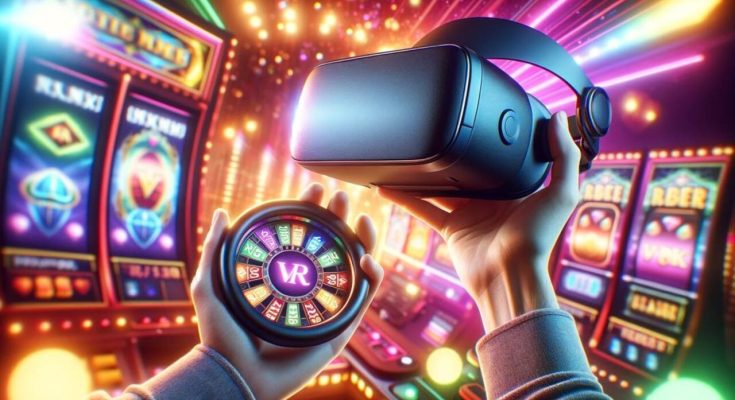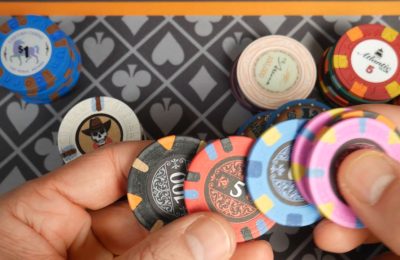The click of a mouse. The tap on a screen. For years, that’s been the primary interface for online gambling. It’s convenient, sure. But immersive? Not really. It’s the difference between reading about a thunderstorm and feeling the wind whip through your hair as the first drops of rain fall.
That’s the gap Virtual Reality technology is rushing to fill. We’re moving past flat, two-dimensional platforms and stepping into a world where the casino comes to you—in breathtaking, three-dimensional life. This isn’t just an upgrade; it’s a paradigm shift. Let’s dive into the innovations turning science fiction into a gambler’s new reality.
The Core Tech: What’s Powering the VR Casino Boom?
It’s easy to think of VR as just a fancy headset. But honestly, the magic lies in the convergence of several key technologies. Without them, the experience would be clunky, nauseating, and frankly, unconvincing.
Headsets and Haptic Feedback
The headset is your portal. Devices like the Meta Quest 3, HTC Vive, and PlayStation VR2 are becoming more affordable and powerful, offering high-resolution displays that reduce the “screen door effect.” But the real game-changer is haptic feedback. Imagine not just seeing a slot lever in front of you, but feeling the subtle resistance as you pull it down with your controller. Or feeling the vibration of the dice tumbling in your virtual hand. This sensory layer adds a depth of realism that was previously unimaginable in online play.
Spatial Audio and Social Avatars
Sound in a VR casino isn’t just background music. It’s spatial. You hear the clinking of chips from the poker table to your left, the distant whirring of a slot machine behind you, and the murmur of conversations that fade as you walk away. This 360-degree soundscape is crucial for selling the illusion.
And then there are the people. Or rather, their avatars. You’re not just playing against faceless usernames. You’re sitting across from a digital representation of another person, complete with (limited) body language and the ability to chat. It recreates the social fabric of a land-based casino, combating the isolation that can sometimes come with online gaming.
A Night in a VR Casino: What’s the Experience Actually Like?
Okay, so you put on the headset. What happens next? Well, you might find yourself transported to a sleek, modern high-roller lounge overlooking a digital Monaco. Or maybe a classic, smoky backroom poker den is more your style. The environmental design is a huge part of the appeal.
You navigate by physically walking (within a safe space) or using a teleportation function. You approach a blackjack table, pull out a virtual chair, and nod to the other players. The dealer, often a live-streamed human or a highly advanced AI, greets you. You pick up your cards with your motion-tracked controllers, and the game begins.
The table games are where VR truly shines, but slots have gotten a major facelift too. Instead of staring at a grid of symbols on a web page, you’re standing in front of a towering, glittering machine. You physically reach out and pull the lever or press the spin button. The reels spin with a satisfying mechanical whirr right in front of your eyes.
The Unseen Engine: Blockchain and AI in the Backend
While VR creates the front-end experience, other gambling technology innovations are working behind the scenes to make it secure and personalized.
Blockchain technology, for instance, is being integrated to offer provably fair games. Every transaction and bet can be recorded on a transparent, immutable ledger. This builds a level of trust that’s hard to achieve with traditional online systems. And with cryptocurrencies, deposits and withdrawals can be near-instantaneous.
Then there’s Artificial Intelligence. AI can power the realistic dealer avatars, making their reactions and interactions feel more natural. But it also works on personalization, suggesting games you might like based on your behavior or even helping to identify problematic gambling patterns—a crucial tool for promoting responsible gambling in an immersive environment.
Challenges on the Virtual Horizon
It’s not all digital champagne and roses, of course. The path to mainstream VR casino adoption is littered with a few hurdles.
First, the cost. A quality VR headset is still a significant investment for the average person. Then there’s the physical space requirement; not everyone has a dedicated room to wander around in virtually. And let’s be honest, some people just get motion sickness.
From a regulatory standpoint, it’s a wild west. Lawmakers are scrambling to catch up with this new medium, creating a patchwork of legal uncertainties across different regions. And finally, the social aspect, while a benefit, also raises questions. When the experience feels so real, does it potentially increase the risk of addiction? It’s a question the industry must tackle head-on.
So, What’s Next? The Future is a Blended Reality
The most exciting developments might not be in pure VR, but in a blend of realities. Augmented Reality (AR) could someday project a blackjack table onto your actual kitchen counter. Or imagine a hybrid where you wear AR glasses at a physical sportsbook, overlaying real-time stats and live betting odds onto the game you’re watching.
The technology is evolving at a breakneck pace. The goal isn’t to replace traditional online casinos overnight, but to offer a new, deeply engaging option. It’s for the player who craves the atmosphere, the social buzz, and the tactile thrill of a real casino, but from the comfort of their own home.
In the end, VR casinos represent more than just a new way to place a bet. They are a testament to our relentless drive to connect, to experience, and to play in worlds of our own making. The cards are being dealt, the slots are spinning, and the virtual doors are now open. The question is, what will we build inside?















